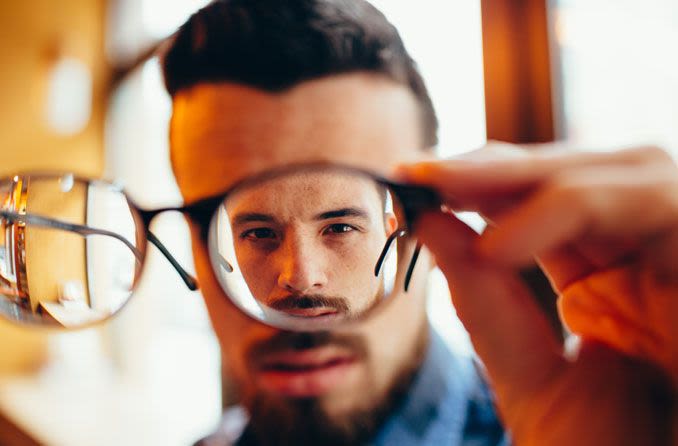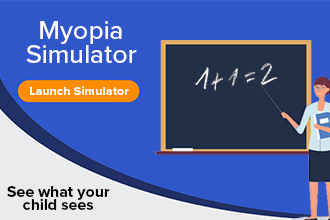Myopia: What is nearsightedness?

Myopia is also known as nearsightedness or shortsightedness. It is the inability to see distant objects clearly unless they are relatively close to your eyes. Myopia is the most common refractive error among children and young adults.
Myopia occurs when the eye grows too long from front to back. This causes light to focus in front of the retina instead of directly on it. If the cornea or lens are too curved, this can also cause myopia. Rarely, myopia can occur if the distance between the cornea and the lens inside the eye is too short.
Distant objects and driving vision are blurry for people who have myopia, but nearby objects tend to be clearer. This is why the condition is also called nearsightedness.
Myopia typically starts to develop during childhood and can progress gradually or rapidly. The most common symptoms of myopia are:
Blurred distance vision
Squinting to see clearly
It is very important to slow myopia progression before it becomes high myopia. High myopia is the medical term for severe myopia. This degree of myopia can lead to serious eye-health issues, including blindness.
Nearsightedness is the most common distance vision problem. Currently, about 2.6 billion people worldwide are nearsighted.
Myopia is most prevalent in the high-income countries of Asia-Pacific. In those countries, just over half the population is nearsighted. Next is East Asia, where 51.6% of the residents are affected.
And the rate of myopia worldwide is increasing rapidly. It's estimated that by the year 2050, roughly half of the world population will be nearsighted.
Researchers aren't sure why myopia is becoming so common, but many eye doctors attribute it to modern lifestyle factors. The factors include less time spent outdoors and more time spent on close-up work.
Close-up work includes things like:
Reading
Using computers
Using portable electronic devices (like tablets and smartphones)
Myopia also tends to run in families. The chance of developing myopia is greater when both parents have myopia. Researchers have discovered at least 200 genetic risk factors for myopia and refractive error.
Myopia can be corrected with standard prescription eyeglasses or contact lenses. These corrective lenses refocus light on the retina. You can also purchase prescription photochromic lenses or sunglasses to correct myopia.
Specialized myopia control glasses are also available that can slow myopia progression.
Once nearsighted children become young adults, their vision usually stabilizes. At that point, myopia can be permanently corrected with refractive surgery. LASIK is the most popular surgical procedure to correct nearsightedness.
If you or your children have symptoms of myopia, schedule a comprehensive eye exam with an eye doctor near you.
SEE RELATED: Bilateral myopia
Amber McManes also contributed to this article.
Borish's clinical refraction. Benjamin WJ & Borish IM. St. Louis Mo: Butterworth Heinemann/Elsevier. 2006.
The correlation between headache and refractive errors. Journal of American Association for Pediatric Ophthalmology and Strabismus. March 2008.
Ametropia in children with headache. Pakistan Journal of Medical Sciences. May - June 2019.
IMI – Myopia genetics report. Investigative Ophthalmology & Visual Science. February 2019.
World report on vision. World Health Organization (WHO). October 2019.
Global prevalence of myopia and high myopia and temporal trends from 2000 through 2050. Ophthalmology. May 2016.
Page published on Thursday, January 23, 2020
Page updated on Tuesday, April 4, 2023
Medically reviewed on Thursday, January 20, 2022







